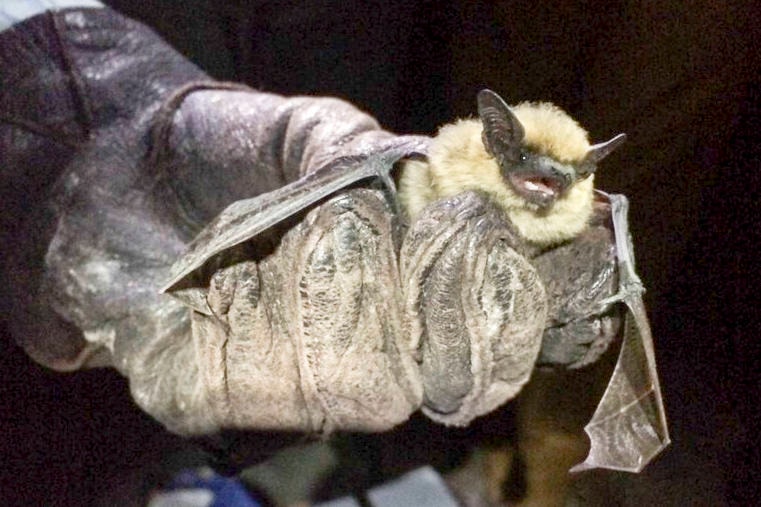It hasn’t been seen yet, but new species of bat has been heard making its way into the Okanagan, joining the roughly 14 species of bats already in the province.
Writing in the Okanagan Bats newsletter, biologist Mike Sarell said the echolocation calls of the canyon bat have been recorded at multiple locations in the Skaha Bluffs area.
“Early spring recordings suggest that they may even be hibernating in the park,” he wrote. “It’s weak flight makes it more apt to live in canyons where it is protected from strong wind.”
| An example of Canyon Bat echolocation call sequence from Skaha Bluffs near Penticton. Courtesy Okanagan Community Bat Program. |
The canyon bat is a very small bat, found in rugged deserts in western North America. Its call was recorded once before in B.C. several years ago, west of Osoyoos. But as this was a single incident, the B.C. Bat Conservation Centre considered it accidental.
Biologist Orville Dyer is also cautious about these latest recordings, noting that the audio recordings are still a little uncertain.
“If you get the right one and it is nice and clean, you can separate bat species with fair confidence, not 100 per cent confidence,” said Dyer. “We will wait for a capture in hand, or some genetic evidence — sometimes we can analyze bat guano — before we actually confirm that it is truly here.”
Dyer said it is possible the canyon bat has been living in B.C. for some time, just in numbers too low to be detected.
A new session of bat counts began July 11, running to Aug. 5, with bat watchers through B.C. being asked to do at least two counts at roosts they are observing.
Margaret Holm, with the Okanagan Community Bat Program, explains that a count earlier this year focused on adult bats, but this one is on the maternal colonies. Female bats give birth to a single pup, and now are starting to teach them to fly.
Related: Keeping track of bats in the Okanagan
“This is the second count period. If it is a good year, you are probably counting twice as many bats at the same location as you did six weeks ago,” said Holm. “We’ve had some hot weather, but fairly good weather in general, so I would think that it’s been a good year.”
Holm added bats are specific about the time they come out, which is at twilight, about 9:15 p.m. at this time of year.
“They will all come out within 20 minutes to half an hour of each other,” said Holm. “I know the Okanagan Bat Program really appreciates people helping in a consistent way. For instance, making a commitment to count once or twice during the summer and send in their results.“
With the exit hole from the colony located, she explained, it’s as easy as setting up a lawn chair and counting the bats as they emerge. Some colonies, like ones in barns, might have more than one exit, making a count more complicated.
“But you only count them once as they exit. You don’t count the ones that are flying around,” said Holm. “It is kind of a neat thing for people to do. Some people have told me their bats come out from under their dock.”
Audio counts are also done, conducted by specialized teams. Dyer said using the audio sensor reveals a whole new world of bats.
“It is a really something to go outside with a bat detector. You can see some bats, but with the detector, you can hear them and they are way more numerous than you can imagine,” said Dyer. “You can look up and you won’t see them, but you can hear them on the detector.”
Related: Researchers eavesdropping on Okanagan bats
Steve Kidd
Senior reporter, Penticton Western News
Email me or message me on Facebook
Follow us on Facebook | Twitter | Instagram
